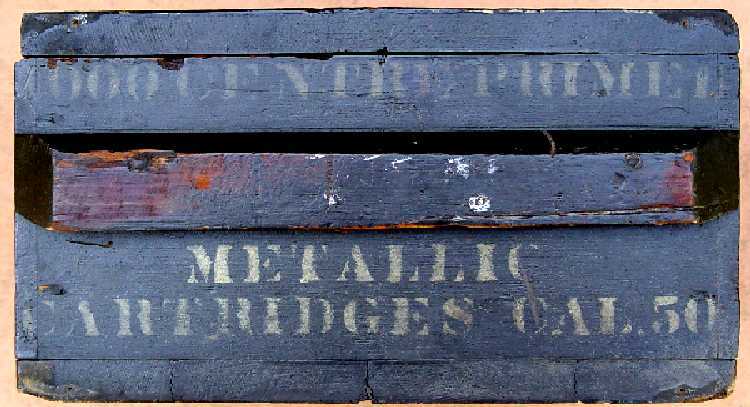|
THE CARTRIDGE COLLECTOR'S EXCHANGE |
| Contents
Cartridge
Lists
Prior Picture Pages:
Links to Other Sites
Cartridge Collectors Organizations:
Auctions:
Books:
Other Collector's Sites: |
Home of the Old Ammo Guy's Virtual
Cartridge Trading Table Featuring a wide range of antique, obsolete, and modern ammunition for collectors Picture Page April 2008 A couple of dish-based (slightly) .32 rimfire.........
The two
.32 rimfire cartridges in the pictures have dished heads, nothing
like the Merwin patent rimfires with their cone shaped deep dished heads, but
with enough of a dish to indicate that it was intended, rather than just
being a chance occurrence during production. These dished bases were
intended to keep the head of the cartridge from swelling when fired, and
could cause the cylinder of a revolver to stop rotating.
The cartridge on the right came to me identified as having been made by
Smith & Wesson, but I'm not certain that this is correct. It has a single
groove bullet and a series of seven
dash shaped tool marks clustered on . . . . . .
The .30 Carbine M18 high pressure cartridge....
Developed in early 1942 by Winchester for proof testing of the .30 Carbine, this cartridge initially utilized a standard brass case, the M2 ball as used in the M1 Garand cartridge, and a 14 grain powder charge. It produced a chamber pressure of 45,000 to 50,000 psi, compared with the 40,000 psi of the standardized round. Initially designated the T27, it was adopted in August of 1944 as the Cartridge, Test, High Pressure, Carbine, Cal. .30, M18. The earliest of these will be found with a W.R.A. .30 S.L. headstamp, the same headstamp as is found on the early developmental ball cartridges. The cartridge on the left in the picture is an early example, as indicated not only by its early 1942 headstamp date, but also by the fact that the case is not tinned. Tinning of the cases was adopted in December 1943 to allow easy identification of the proof loads, as if the distinctive bullet was not enough. In May of 1943, the use of gilding metal clad steel jacketed bullets in the production of the high pressure test cartridge was authorized, these cartridges being designated the M18 (Alternate). The cartridge on the right in the picture, in addition to having the standard tinned case, is loaded with a steel jacketed bullet. According to the book History of Modern U.S. Military Small Arms Ammunition by Hackley, Woodin and Scranton, these proof cartridges were produced only by Winchester and the Frankford Arsenal during World War 2; other makers headstamps will only be found on post-war examples. According to Bill Woodin, the headstamps of the brass case war production examples include W.R.A. .30 S.L. (quite rare), W.R.A. 42, 43 and 44; those of the tinned case examples include W.R.A. *44, W.R.A. 44 and 45, F A 4 (1944) and F A 45. I have not yet had an opportunity to add a Frankford Arsenal example to my collection, and quite frankly, I don't recall ever seeing one.
.
. . . . .
. . . .
An inside primed cartridge for 'Le Protector'..........
.
. . .
. . . . . . . .
. .
. . . . . . . . . . . .
|

 .
.